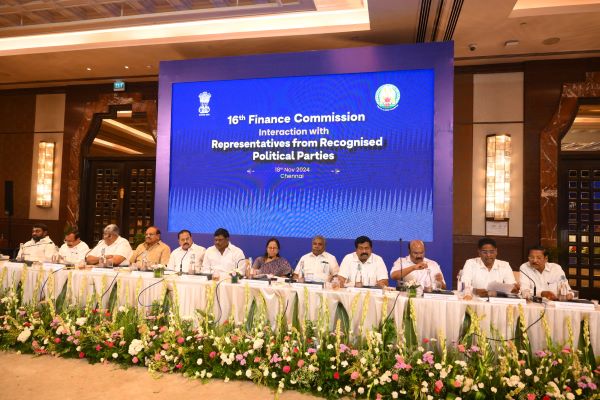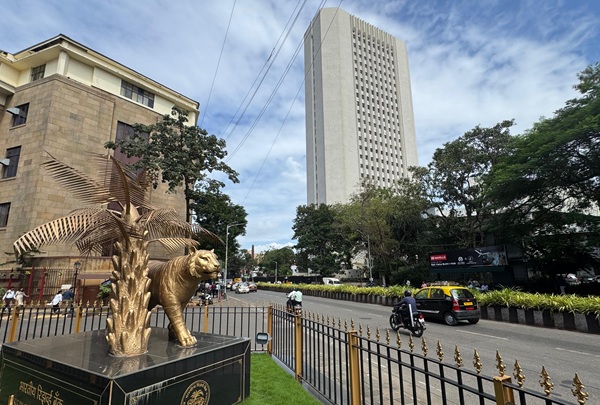.png)

Alok Kumar Mishra is a professor at the University of Hyderabad, researching financial economics and public policy.
Dr. Iti Vyas is an Assistant Professor of Economics at ICFAI Law School, IFHE, Hyderabad.
September 11, 2025 at 8:39 AM IST
The household budget is the lifeblood of India’s economy. Private consumption has long driven growth, so policies that raise disposable income resonate well beyond the kitchen table. In 2025, the Indian government delivered a twin boost - income-tax relief and a simplified goods and services tax regime.
Household Gain vs. Export Strain
The new tax slabs in the Budget for 2025-26 raised the effective zero-tax threshold while cutting rates across middle brackets, leaving taxpayers with savings up to ₹114,000 annually under the default new regime. At the same time, the GST Council streamlined rates into a 5% and 18% structure.
Levies on consumer durables such as televisions, air conditioners, and dishwashers fell from 28% to 18%, while laptops and mobile phones stayed at 18%. Food staples are exempt, most processed foods face 5%, and cuts on inputs like cement are expected to ripple through housing and downstream consumption. Together, these measures both lift disposable income and lower household costs.
In April 2025, the White House invoked emergency powers to impose a 10% general tariff, with higher "reciprocal" rates on countries running large trade deficits with the US. By mid-year, the policy had hardened into double-digit effective tariffs, with some India-specific lines facing duties as high as 50% on roughly $60 billion worth of exports. Labour-intensive sectors like textiles, diamonds, and furniture were directly hit. India shipped $87.3 billion worth of goods to the US in 2024, about 18% of India’s total exports, so the shock is significant. Analysts warn tariffs could shave 0.5-0.6 percentage points off GDP if they persist.
For India’s formal, tax-paying middle class, tax cuts and GST relief expand discretionary income and lower sticker prices on goods. This should fuel demand in white goods, two-wheelers, entry-level cars, electronics, and home improvement products. But export-linked jobs in clusters such as Surat (diamonds), Tiruppur (knitwear), Moradabad (brassware), and Jaipur (gems) are vulnerable. Factories are already trimming shifts or slowing wage growth, raising concerns about regional demand if orders continue to decline.
GST Relief vs. Imported Inflation
GST cuts reduce the wedge between factory gate and retail prices, giving households more spending room for travel, food, and healthcare. Yet tariff-driven costs from disrupted supply chains and pricier imported inputs could blunt these gains. Real consumption growth will hinge on whether GST-led disinflation outweighs imported inflation.
Housing, a high-multiplier channel, stands to benefit from cheaper cement and related inputs. Developers expect demand to pick up post-monsoon, potentially fuelling construction and downstream demand for durables. This housing-led momentum could partly cushion export losses.
India's export engine also rests on services. A broad protectionist turn in the US could squeeze IT and business-process outsourcing, slowing hiring and wage growth in metropolitan centres. For urban, salaried households, that would dilute some of the gains from tax and GST relief.
Sustaining tax relief requires fiscal room. Stronger GST collections from compliance and higher volumes are essential to offset revenue losses. If exports falter and GST refunds rise, fiscal balances could tighten, forcing recalibration in the next Budget.
Winners vs. Fault Lines
Winners
Urban middle-class consumers: Lower income tax and GST cuts will likely spur upgrades such as larger TVs and inverter ACs during the festive season.
Construction ecosystem: Cheaper cement improves affordability for developers and buyers, spurring demand for steel, furnishing, and appliances.
MSMEs: Targeted GST cuts, such as on handmade carpets from 12% to 5%, may revive local orders and tourist sales.
Fault lines
Export clusters: Textiles, gems and jewellery, and furniture face declining orders, hurting ancillary services like logistics and finance.
Services exports: IT hubs risk slower wage growth if US procurement and staffing regulations tighten.
Imported inflation: Higher freight charges and input costs could erode GST-driven disinflation.
Policy Priorities
Safety nets for export-heavy districts: Working capital support, bridge finance, guarantees, and job matching schemes can cushion MSMEs from volatility.
Supply chain deepening: Lowering GST on capital goods and logistics could accelerate import substitution without resorting to protectionism.
Consumption finance: Tax reliefs may buy-now-pay-later purchases. Stricter loan-to-value norms and transparent EMIs can prevent household leverage risks.
India is betting that tax relief and cheaper GST-rated goods will keep consumption strong even as tariffs squeeze exports. The mix should support demand in 2025–2026, especially in housing and urban durables. Yet, unevenness remains as IT services face policy risks, export hubs are exposed to tariff shocks, and imported inflation could erode purchasing power.
Whether consumption stays resilient will depend on policy follow-through. If New Delhi complements tax and GST relief with targeted support for vulnerable clusters and a clear roadmap to strengthen supply chains, consumption can remain resilient. Otherwise, tax savings could turn into precautionary savings, weakening demand. The decisive factor signal will come in the next two quarters, reflected in festival sales, construction activity, and the trajectory of US trade policy.




